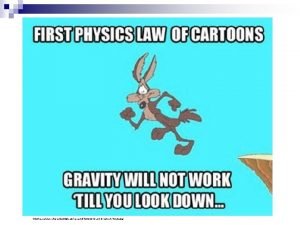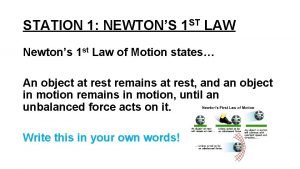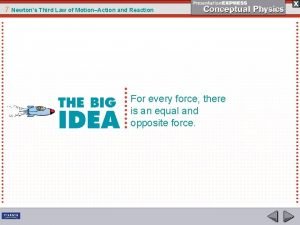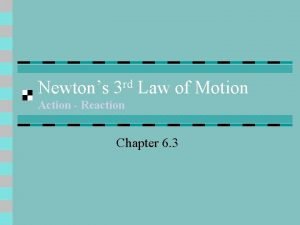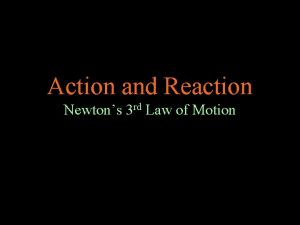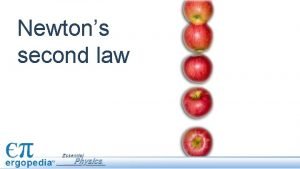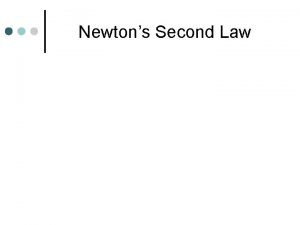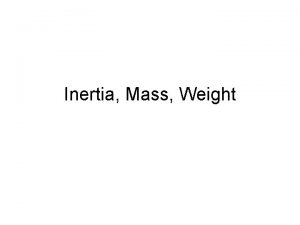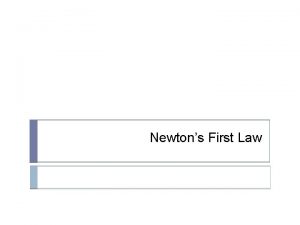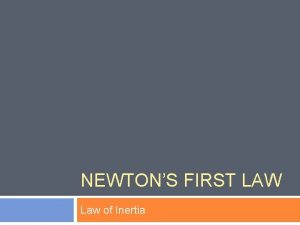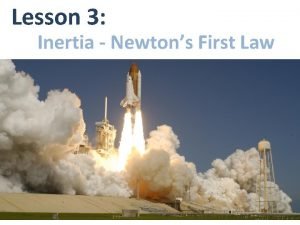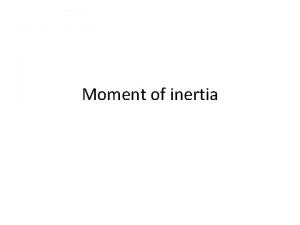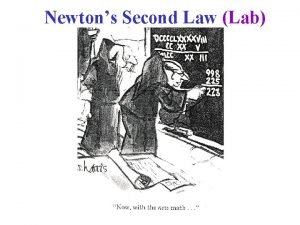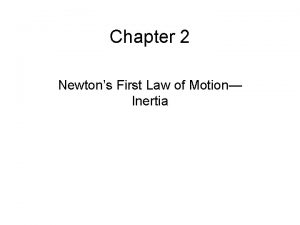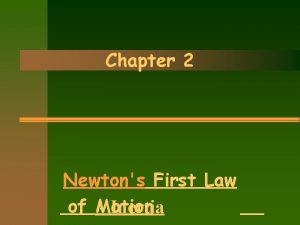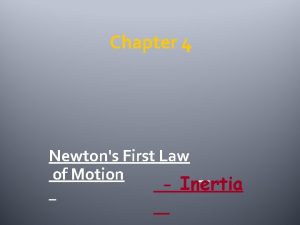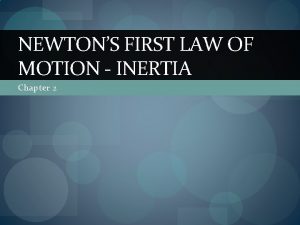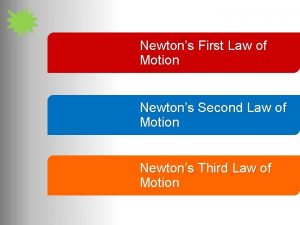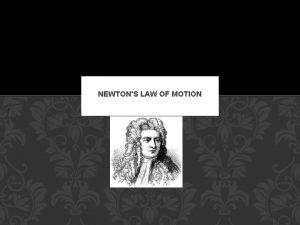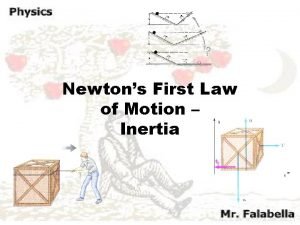Chapter 2 Newtons First Law of Motion Inertia




















- Slides: 20

Chapter 2 Newton’s First Law of Motion - Inertia

Stationary Earth u Earth is heavy q u Easier to imagine the sky can move It looks like the sky is moving q We have no sensation of our motion Rotating Earth would make objects fly off of the surface u Stellar Parallax u

Stellar Parallax u Hipparchus 150 BC June Sun January

Aristotelian Universe Terrestrial Realm o Composition predicts motion natural tendencies Fire and Air tend to rise Earth and Water tend to sink o Overall tendency to seek rest o Objects are corruptible (changing)

1. ARISTOTLE ON MOTION Aristotle attempted to understand motion by classification. Two Classes: Natural and Violent

Aristotelian Universe Celestial Realm Celestial Objects composed of Aether Self luminous but does not consume u Motion is constant, circular u Objects are incorruptible (not changing) Meteors and comets were phenomena of the Earth’s atmosphere u

u The falling speed of an object was supposed to be proportional to its weight. u Galileo’s Experiment

Nicholas Copernicus 1473 - 1543 (Niklas Koppernigk) Developed a mathematical model for a Sun-centered solar system

Galileo Galilei 1564 -1642 u. Among the first to turn a telescope to the sky u. Developed the Scientific Method u. Believed in the popularization of science u. Developed the Law of Inertia

He tested with planes. u Demo - Ball and incline plane u The change in speed depended on the slope of the incline. u Seemed that the ball was trying to achieve the same vertical height.


Isaac Newton 1642 - 1727

Newton’s Laws The 1 st Law A body continues to move as it has been moving unless acted upon by an external force.

u No mention of chemical composition. u No mention of terrestrial or celestial realms u Force required when object changes motion. u Acceleration is the observable consequence of force acting.

Net Force u Force q We is a vector must add all the forces acting on the body 5 N 5 N 10 N 5 N 0 N 10 N 5 N

Equilibrium u When the net force is zero (SF = 0) Ø Acceleration is zero Ø Velocity may not be zero

Static Equilibrium Velocity is zero Examples: Scales pushing up Normal up Weight down Computer setting on a table Weighing yourself on a set of scales Hanging from a tree Tree Car parked on an incline pulling up Friction Weight down Normal Weight down

Mass and Inertia u Inertia is a property of a body that resists changes in motion u Mass is a measure of the amount of matter in a body u Inertia and Mass are the same concept q Units – Kg or slugs

Weight u Force of gravity pulling on the mass of the body q Units u. A newton is about the weight of a small apple q One u. W – Newtons or Pounds kg weighs 2. 2 lbs. = mg qg = acceleration due to gravity at the surface of the Earth • = 32 ft/s 2 = 9. 8 m/s 2

Inertia Demonstrations u Demo - Table setting u Demo - Bottle, hoop, and chalk
 Newton's 1st law meme
Newton's 1st law meme Newtons first law of motion
Newtons first law of motion Newtons 3 rd law of motion
Newtons 3 rd law of motion Newtons 3 rd law of motion
Newtons 3 rd law of motion Third
Third Newtons 3 rd law of motion
Newtons 3 rd law of motion Newton's 3 laws of motion
Newton's 3 laws of motion Newtons third law of motion
Newtons third law of motion Newtons 3 rd law of motion
Newtons 3 rd law of motion Newtons 3 laws
Newtons 3 laws Newtons 3 rd law of motion
Newtons 3 rd law of motion Application of newton's second law
Application of newton's second law Newton's second law of motion examples with diagram
Newton's second law of motion examples with diagram Newtons law of motion
Newtons law of motion Newtons st law
Newtons st law Newton's law
Newton's law What is motion
What is motion Newton's first law and second law and third law
Newton's first law and second law and third law Si unit of newton's first law
Si unit of newton's first law Newtons laws od motion
Newtons laws od motion What are newtons 3 laws
What are newtons 3 laws
